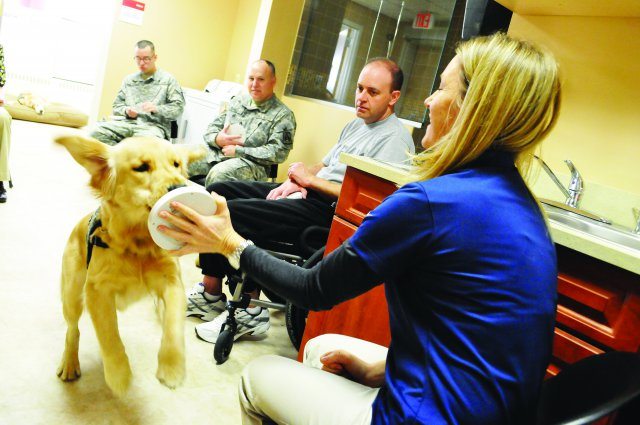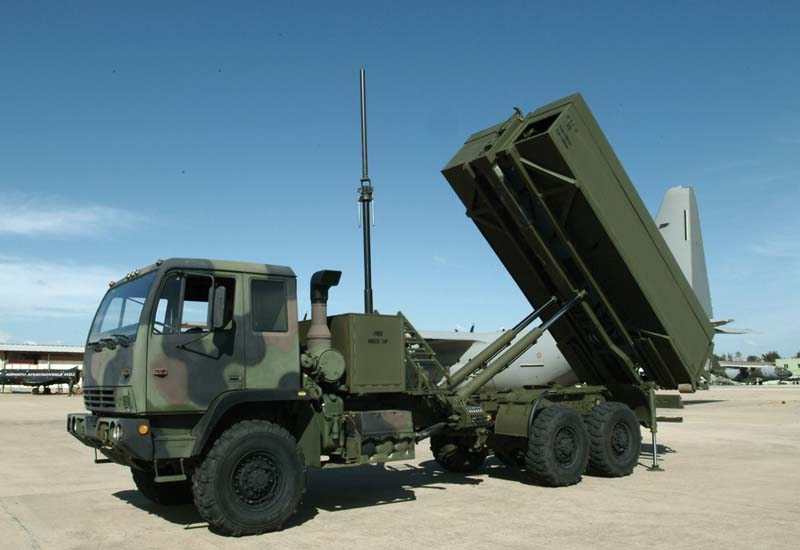Service dogs are training at the Warrior Transition Battalion to help physically disabled veterans perform daily tasks. Soldiers and civilians prepare the dogs to respond to commands and assist their human partners in real-world environments.
“These dogs will mitigate the daily physical task for physically disabled veterans,” said Heidi Bonorato, Warrior Transition Brigade Service Dog Training Instructor. “The trainers prepare exceptional service animals.”
The program is geared towards helping veterans with disabilities that prohibit their ability to properly conduct motor functions such as pressing handicap buttons.
The battalion receives the dogs from non-profit organizations at eight to 12 weeks old.
“This is all they know,” said Maj. John Arbino, Warrior Trainer with the Service Dog Training Program.”That’s good because they don’t form any bad habits.”
Service dogs spend two years practicing commands such as learning how to respond to their names, riding escalators and following a person operating a wheelchair. Soldiers and civilians teach dogs the various skills in the Warrior Pavilion using buttons, ropes and other tools.
The animals also go on field trips to places such as movie theaters, restaurants and stores. The trips teach the dogs how to assist veterans maneuvering through the facilities without sniffing a patron’s dinner, snagging a child’s popcorn bag or other unacceptable behavior.
“They’re really smart dogs who will help service members,” said Pfc. Joseph Walsh, Warrior Trainer with the Service Dog Training Program. “I really enjoy coming here and helping.”
After two years, the dogs are returned to the non-profit organization that provided the animal. The non-profits assign the animals to veterans based on the dog’s skills and individual veteran’s needs.
Tracy Floyd, Warrior Transition Battalion Rehabilitation Manager, said “A veteran can apply for a service dog through non-profit service dog organizations with the support of their medical team,” Floyd said. “The non-profit organization then determines, based upon the veteran’s needs, if they qualify for a service dog and will facilitate placement with a dog that will be able to assist the veteran.”
Arbino said he met one of the servicemembers who received an animal.
“He was very thankful to receive a dog that can help him in his daily life activities,” Arbino said. “That’s the best part of the program.”
The program also provides relief to the Soldiers who teach the dogs. The Warrior Transition Battalion servicemembers are referred to the program by an occupational therapist. The Soldiers must list specific reasons why they wish to participate and objectives they hope to complete while training dogs.
“We select warriors who aren’t here just to pet puppies, but also have their own goals in mind,” Bonorato said.
Sgt. Erin Burtner, Warrior Trainer with the Service Dog Training Program, said the program allows her to meet people and become more social.
“Dogs, in general, are very therapeutic,” Burtner said. “It’s a great way for warriors to come and participate and not feel you have to be the center of attention.”
Staff Sgt. Charles Baird, also a Warrior Trainer with the Service Dog Training Program, said the program provides a distraction from appointments and other responsibilities associated with his healing.
“The dogs don’t look at you funny. They’re interested in playing and getting treats,” Baird said. “This takes your mind off a lot of stuff you’re going through.”











